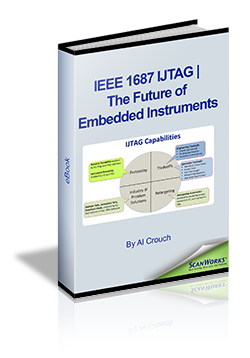For years, the industry has been grappling with how to access, control and operate instruments that have been embedded in chips. The problem wasn’t that the instruments couldn’t be accessed. Instead, there were too many access methods, each proprietary or customized by the chip supplier. The IEEE 1687 IJTAG standard changed this. Not only has IJTAG standardized the access method, but it’s also widened the scope of re-use for embedded instruments. Rather than being limited to just chip characterization, test and debug, IJTAG enables re-use of instruments and their test vectors to validate, test and debug circuit boards as well.
 Of course, there are always certain capabilities or features enabled by a new standard that fly under the radar for a while and only emerge as engineers start using the standard and discover them. To call attention to these gems in IJTAG, we’ve published a new eBook entitled: “IEEE 1687 IJTAG | The Future of Embedded Instruments.”
Of course, there are always certain capabilities or features enabled by a new standard that fly under the radar for a while and only emerge as engineers start using the standard and discover them. To call attention to these gems in IJTAG, we’ve published a new eBook entitled: “IEEE 1687 IJTAG | The Future of Embedded Instruments.”
In addition to discussing how IJTAG has affected chip characterization and debug, the portability of IP, retargeting test vectors, embedded TAPs and on-chip networks of instruments, it also describes how to manage power domains with IJTAG, enable instrument operation concurrence, provide dynamically scalable scan paths, deal with embedded TAP controllers, optimize physical tradeoffs involving routing congestion, and more.
Here’s a link to “IEEE 1687 IJTAG | The Future of Embedded Instruments."

